How Long to Cook Pizza in the Oven: Timings for Perfect Crust and Melted Cheese
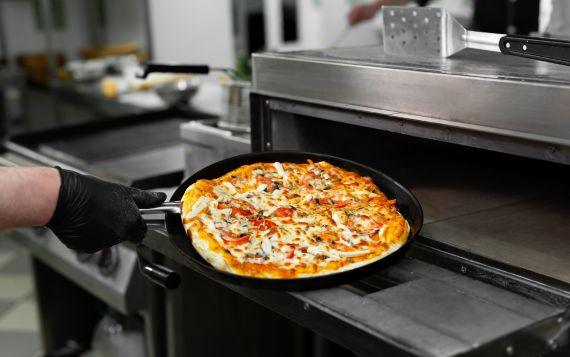
Key Takeaways
Here's a quick guide to pizza cook timing:
Thin Crust Pizza Dough
- Roll out dough very thin, around 1/8-inch thick
- Bake at 500°F (260°C) for 8-10 minutes, until crust is lightly browned
Medium Crust Pizza Dough
- Roll out dough to desired thickness, around 1/4 inch thick
- Bake at 475-500°F (245-260°C) for 10-15 minutes, until golden brown
Deep Dish Pizza Dough
- Press dough into an oiled deep dish pan to form a 1-1.5 inch thick crust up sides
- Bake at 400°F (205°C) for 20-30 minutes, until crust is golden and filling is bubbly
How Long Should You Bake a Pizza for?

Timing is crucial for achieving the perfect pizza with a browned crust and well-cooked toppings. Follow these times to ensure your pizza is baked to perfection.
The Average Time to Cook a Pizza
For most ovens, bake your pizza at a high temperature, between 400°F to 500°F. The cooking time typically ranges from:
Thin Crust Pizza
- Temperature: 500°F (260°C)
- Time: 8-10 minutes
- Bake until crust is lightly browned
Medium/Traditional Crust Pizza
- Temperature: 475-500°F (245-260°C)
- Time: 10-15 minutes
- Bake until golden brow
Deep Dish Pizza
- Temperature: 400-450°F (205-230°C)
- Time: 20-30 minutes
- Bake until crust is golden and filling is bubbly
- Cover edges with foil after 15 minutes to prevent over-browning
It's essential to preheat the oven for around 20 to 30 minutes before cooking to maintain a steady temperature throughout the baking process. The bake time can vary depending on factors like oven temperature, thickness of crust, and amount of toppings. It's recommended to watch the pizza closely towards the end of the bake time. Allow 5-10 minutes cooling time for deep dish pizza before slicing and serving.
Time Distribution for Cooking Pizza

Depending on your oven type and whether you're using a pizza stone, a baking sheet, or placing the pizza directly on the oven rack, the time distribution for pizza cooking may vary slightly.
- With a pizza stone: preheat the stone with the oven.
- Directly on the oven rack: ensure your pizza dough has enough structure to hold the toppings.
- On a baking sheet: it might slightly increase the required time due to less heat conductivity compared to a pizza stone.
How Long to Cook Homemade Pizza?
Preparation
- Allow the pizza dough to come to room temperature and rest for 30 minutes before shaping. This allows the gluten to relax and makes the dough easier to shape.
- Preheat the oven as high as possible, ideally between 450-500°F. Allow at least 15-20 minutes for the oven to fully preheat before baking.
- If using a pizza stone, place it in the oven while preheating. The hot stone will help crisp the bottom crust.
Baking Time
- Bake the pizza for 8-15 minutes, depending on oven temperature and the thickness of the crust.
- The crust should be golden brown when done. The edges may brown faster than the center, so watch closely.
- For a thick-crusted pizza, a lower temp (around 400°F) and longer bake time (20-30 minutes) are needed to fully cook the center without over-browning the edges.
- Meat or extra cheese toppings will require a longer baking time, closer to 15 minutes.
Factors in Pizza Cooking Time
Variables that impact cooking time are critical to achieving the perfect crust and well-cooked toppings. Your oven's temperature, along with the choice of toppings and type of pizza dough, plays pivotal roles in the outcome of your homemade pizza.
Here's what you need to consider:
- Pizza Type: Fresh homemade pizzas typically bake quicker than frozen ones.
- Size: Smaller pizzas cook faster than larger ones.
- Crust Thickness: A thin crust bakes in a shorter time compared with a thick or deep-dish crust.
- Oven Temperature: A higher temperature shortens the baking time.
- Toppings and pizza sauce: Heavier toppings or extra sauce might need additional time to cook through.
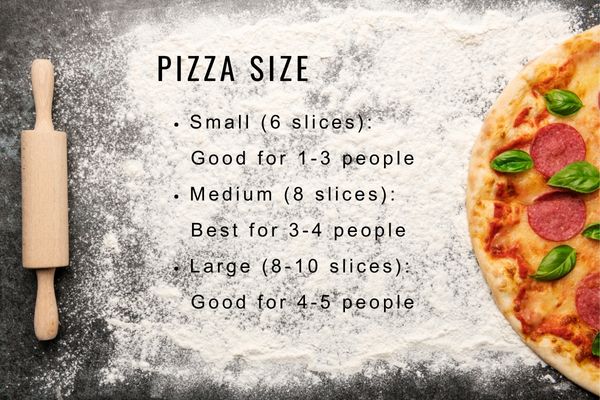
The Best Temperature to Cook Pizza
For a classic medium-crust pizza, cooking at high temperatures ranging from 475°F to 500°F (245°C to 260°C) is ideal. These temperatures promote a browned, crispy crust. For thicker crusts, lower the heat slightly to around 400°F to 450°F (205°C to 230°C), extending the baking time to ensure the middle is cooked through without burning the crust.
The Baking Time Vary Based on the Ingredients Used
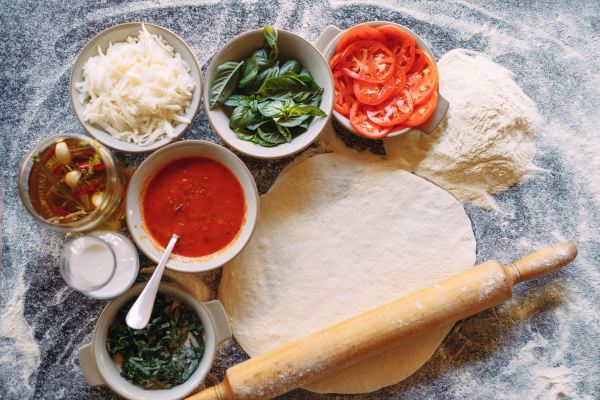
Thicker crusts and heftier toppings add to the cooking time. More moisture from pizza sauce or vegetables requires a couple of extra minutes.
Conversely, a thin-crust pizza with minimal toppings could be ready in about 10 minutes.
Using a pizza stone can reduce cooking time and improve crust texture, due to its heat retention and distribution properties. Always preheat the oven with the pizza stone inside. When the oven reaches the appropriate temperature, slide the pizza onto the stone using a pizza peel for best results. Using a baking sheet may increase the baking time slightly, as it does not conduct heat as effectively.
How can I tell if my pizza is cooked correctly?
To determine if your pizza is cooked correctly, check the crust for a golden-brown color and ensure the cheese is evenly melted and bubbling. A properly baked pizza should exhibit these characteristics when the recommended oven temperature and baking time are followed.
Crust Thickness
Your pizza crust's thickness directly influences your baking time. For a thinner crust, a high temperature of around 500°F (260°C) for 8-10 minutes is often sufficient. In contrast, a thicker crust will require a slightly lower temperature and a longer bake time, typically 10-15 minutes, to ensure it's cooked all the way through without burning.
Using a pizza stone can help evenly distribute heat, providing a consistent baking surface that results in a crisper crust. Always preheat the pizza stone with the oven to ensure it’s at the right temperature before introducing your dough ball or frozen pizza.

Cheese Melt
The state of the cheese is a reliable indicator of doneness.
- Even Melt: The cheese should be fully melted across the surface of the pizza, without any unmelted patches.
- Color: Look for a slightly golden hue, especially on raised areas where the cheese might bubble.
- Texture: It should be bubbly and potentially exhibit spots of light browning without being burnt.
If the pizza contains toppings, they should be cooked through and complement the melted cheese. Keep an eye on them, primarily when using toppings that can greatly affect the overall bake, like large amounts of moist vegetables or thick slices of meat.
Remember to adjust your baking time if your pizza is loaded with toppings, as this can increase the moisture content and require additional time. Always use a baking sheet or pizza peel to safely handle your pizza and preheat the oven to the desired temperature for an effective bake.

Frequently Asked Questions
Why Does the Oven Need to Be So Hot?
A hot oven is key to replicating the environment of a professional pizza oven at home. High temperatures allow for the rapid rising of the dough ball, creating air pockets that lead to a light and airy pizza crust. This intense heat also ensures a delightfully brown and crispy base while melting the cheese to a perfect golden hue.
At what temperature and duration should homemade pizza be baked for best results?
For a balance of a crispy crust and evenly cooked toppings, bake your pizza at a temperature of around 475-500 degrees Fahrenheit for 10 to 15 minutes. Homemade pizzas generally require a high temperature for a shorter duration to emulate the environment of a professional pizza oven.
For a softer crust, how long should pizza be baked at 350 degrees Fahrenheit?
To achieve a softer crust, baking the pizza at 350 degrees Fahrenheit for about 20 to 25 minutes is advised. This lower temperature allows the pizza to cook through more slowly, resulting in a less crispy texture.
What is the recommended cooking time for pizza at a high temperature, such as 500 degrees Fahrenheit?
When baking pizza at 500 degrees Fahrenheit, aim for a cooking time of about 8 to 10 minutes. Such a high temperature creates a crisp crust and quickly melts the cheese, while still cooking the toppings thoroughly.
How do different oven temperatures, like 400 or 450 degrees Fahrenheit, affect pizza cooking times?
At 400°F, a thin-crust pizza takes 10-15 minutes to cook. At 450°F, the same thin crust can be done in 8-12 minutes. For a thick-crust pizza, it takes 18-25 minutes at 400°F and 14-20 minutes at 450°F. So when increasing the temperature by 50 degrees Fahrenheit, the cooking time can be reduced by 2-5 minutes depending on crust thickness.


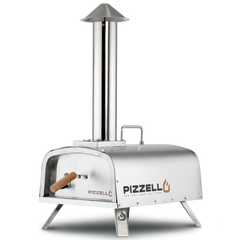
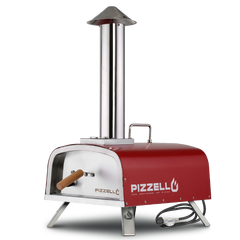
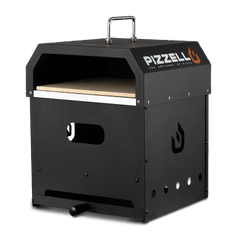
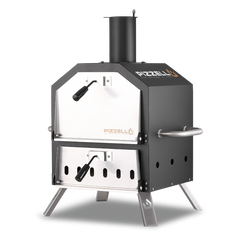
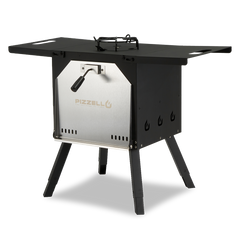



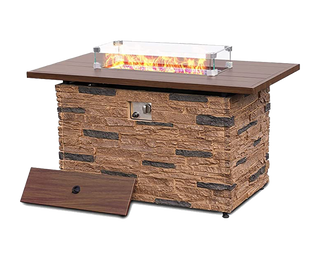
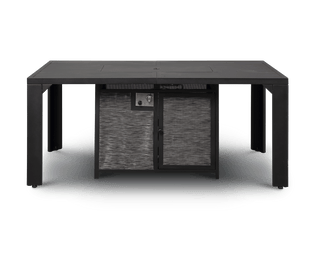
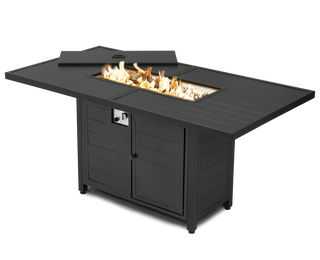

 Dining Table
Dining Table
 Cart
Cart
 Cart Pro
Cart Pro
 Pizza Stone
Pizza Stone
 Gas Burner
Gas Burner
 Pizza Peel
Pizza Peel
 Dining Chairs
Dining Chairs
 Wind Guard
Wind Guard
 Fire Glass Bead
Fire Glass Bead
 Waterproof Cover
Waterproof Cover















